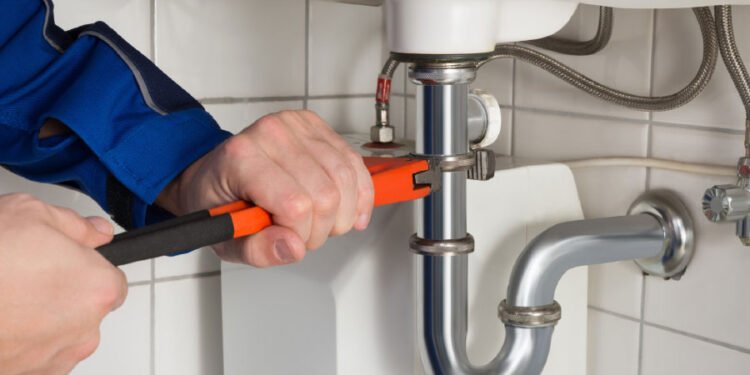Leaky faucets. Clogged drains. Running toilets. Sump pump failure. Sooner or later, every homeowner faces plumbing problems. Some, like dripping faucets, are minor irritations. Others, like a failed sump pump, can lead to flooding and cause thousands of dollars worth of damage.
Fortunately, homeowners can fix minor problems themselves. Good maintenance can prevent others. Here are six common plumbing problems, their causes, and ways to prevent them.
6 Common Plumbing Problems and How to Avoid Them
1. Dripping Faucets
If your faucet leaks at a rate of one drip per second, it can waste over 3,000 gallons per year. That’s enough water for 180 showers! Replacing a worn-out washer or O-ring usually repairs the problem, an easy DIY job for most people. If you haven’t done this before, view an online tutorial first and turn off the water line before starting.
2. Leaking Pipes
Pipes leak for various reasons, like clogs, corrosion, pipe joint damage, and cracked seals. Repair leaky pipes immediately to prevent damage to your floor and furnishings. To prevent leaks caused by freezing, keep the house warm enough and run the water slightly in cold weather. If you don’t have the skills and tools to repair pipes yourself, hire a plumbing contractor.
3. Running Toilets
A running toilet wastes up to 200 gallons of water each day. It’s usually caused by a worn-out flapper, corroded toilet handles, or flapper chains that are the wrong size. Home improvement stores sell toilet repair kits so you can replace the inner workings of a toilet. Or call a plumber if you’d rather not take on this DIY task or if the toilet is still running after your repair.
4. Clogged Drains
If you have one slow or clogged drain in your home, it usually means hair, soap, or objects have blocked the drain. Use a plunger or a chemical drain cleaner to clear the clog. To avoid clogs, flush nothing but dissolvable waste products. Ensure children don’t flush items down the toilet and use a hair catcher in the shower. Multiple slow drains throughout the house can signify a sewer line problem. This is a complicated problem best handled by professionals.
5. Low Water Pressure
The most common cause of low water pressure is a buildup of calcium and sediment in the aerator of a faucet. To clean the aerator, unscrew the end of the faucet tap and soak the little screen in vinegar overnight. Other causes of low water pressure require professional intervention. These include pipe corrosion, hidden water leaks, and blocked sewer lines.
6. Water Heater Problems
Not having hot water for bathing or washing dishes is a homeowner’s nightmare. A faulty thermostat, a pilot light that went out, or sediment in the system could cause your water heater to stop working. Schedule an annual inspection for your water heater and let your plumber handle repairs. When your water heater leaks, it’s time to replace it.
7. Sump Pump Failure
Your home’s sump pump prevents flooding after heavy rain. Usually, in a basement, it detects elevated water levels and pumps water away from your foundation. Sump pumps fail due to stuck switches, poor installation, and clogged discharge lines. Unfortunately, most homeowners discover a sump pump failure by walking into a flooded basement. Pumps over 10 years old are more likely to fail, so be sure to repair or replace them. Install a battery backup so your pump works even during a power outage. Test your sump pump each year before the rainy season. Pour a bucket of water slowly into the pump and see if it switches on. If not, the pump needs repair.
Repairing Water Damage at Home
If a plumbing problem leads to water damage in your home, you’ll need to act fast to minimize the effect on your home and belongings. Shut off the water source and mop or blot up as much as possible.
For extensive damage or if mold develops, call water restoration experts. For example, the water damage restoration experts at SERVPRO use specialized expertise and equipment to clean, sanitize and repair your home. They manage insurance claims and remove water with powerful pumps when needed. They clean, sanitize and deodorize furniture and hard surfaces and use specialized equipment to dry and dehumidify your property. The last step is to repair your property, including replacing drywall to return it to its former condition.
Avoiding Common Plumbing Problems
With preventive maintenance and fast action, you can avoid or minimize the damage from common plumbing problems. Call in a pro if you lack the tools or expertise for DIY repairs. That’s also good advice if a long-term leak or sudden plumbing failure damages your home and furnishings. Bring in water restoration experts to contain and repair the damage.


